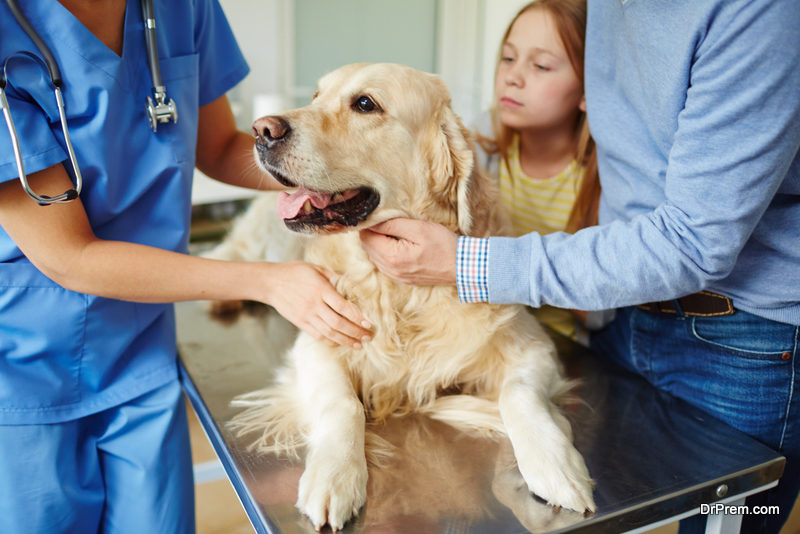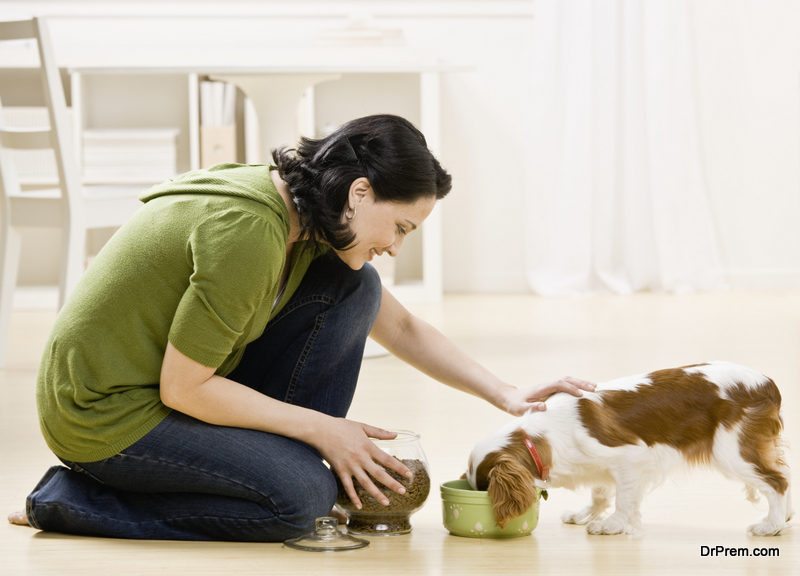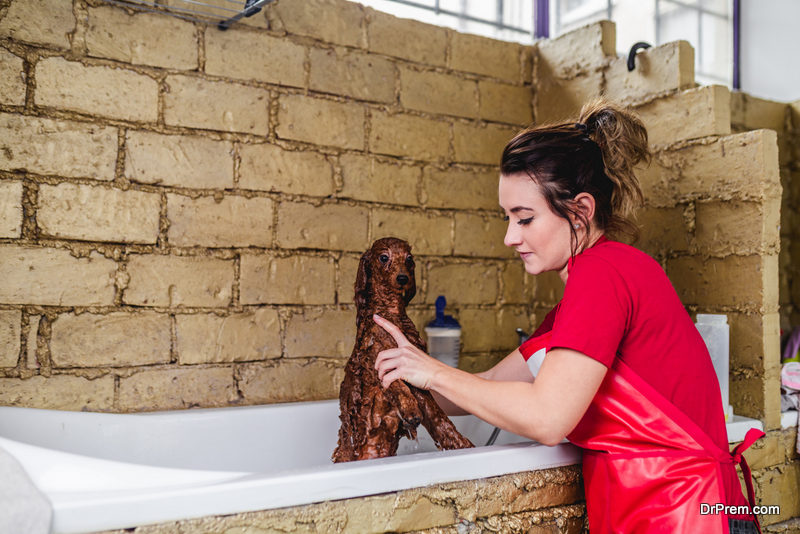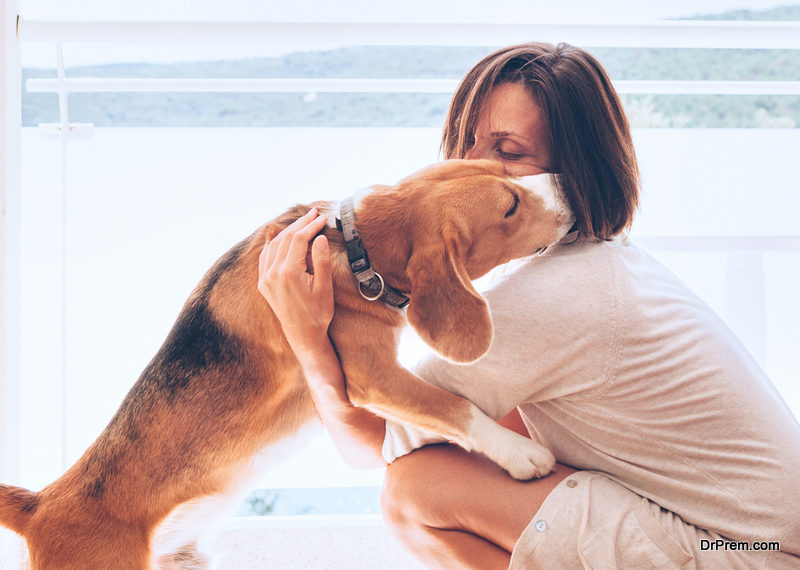Are you a new dog owner? Congratulations! You’ve just made one of the best decisions of your life.
If you’re not a new dog owner and just want tips on how to help your dog have a healthy and happy life, you’re more than welcome here too.
Currently, a little over 60 million Americans own a dog, and most of them are interested in ensuring their pet has an amazing life. After all, dogs give so much of themselves to us, that we need to make sure we give as much back to them as possible.
Keep reading for some of the ways to ensure your dog lives his or her best life.
1. Spay or Neuter Your Dog
Unless you plan to (responsibly) breed your dog, you should have them spayed or neutered. If you adopted your dog from a shelter that requires them to be spayed or neutered prior to your adoption, you’ll have already had this taken care of. But if not, it is recommended that you do so.
There is already an epidemic of homeless animals, and many of them end up in shelters or worse: euthanized. As such, it is important to ensure that your dog doesn’t contribute to the issue.
Additionally, spaying and neutering your pet can help protect them against diseases later in life. Spaying a female dog will help prevent of development of uterine or breast cancer. A male dog who has been neutered will be protected against prostate and testicular cancer.
Spaying and neutering can also prevent your dog from having the urge to roam or your female dog from going into heat.
2. Vaccinate Your Dog On Schedule
 When you first adopt a dog from a shelter, they’ll likely give you a list of vaccines your dog has had and when they’re due for another one. If you don’t know your dog’s history, take him or her to the vet for a check-up where they will be able to help you decide the correct course of vaccination.
When you first adopt a dog from a shelter, they’ll likely give you a list of vaccines your dog has had and when they’re due for another one. If you don’t know your dog’s history, take him or her to the vet for a check-up where they will be able to help you decide the correct course of vaccination.
Vaccines keep your dog from catching a preventable illness. They also help ensure that your dog doesn’t pass on a preventable illness to other animals who haven’t yet been vaccinated.
Many dog daycares and kennels won’t allow dogs who haven’t been vaccinated, so not doing so can be a deterrent from allowing your dog to socialize.
3. Prevent Ticks, Heart Worms and Fleas with Anti-Flea Tablets and Treatments
Your vet will be able to tell you the best way to protect your pet from fleas and ticks in your area. But, in almost all cases, your dog will need treatment, typically in the form of medication, to help protect them.
Ticks and fleas can cause irritation and make your dog uncomfortable, while heartworms can be a little more serious. Still, it is important to give your dog the flea and heartworm medication on schedule to ensure that he or she stays protected for life.
Most vets give this as a monthly treatment, though together you may choose an alternative. Some people buy directly through their veterinarian, while other people may buy them online with a vet prescription.
It doesn’t matter how you get the prescriptions, as long as they’re administered on time and in full. Innovet, for example, provides some natural alternatives to help your dog keep the fleas and ticks at bay.
Speak with your vet about the most appropriate course of action for your little one.
4. Feed Your Dog Healthy Dog Food
 Just like humans in today’s modern world, dogs are also prone to obesity. As such, you’ll need to strictly monitor what your dog eats and how much he or she eats.
Just like humans in today’s modern world, dogs are also prone to obesity. As such, you’ll need to strictly monitor what your dog eats and how much he or she eats.
If you’re a new dog owner, you may wish to go over a quick list of what dogs shouldn’t eat. Your vet can help give you a more tailored list, as some dogs may be allergic to items other dogs are not. But there are a few things you shouldn’t give your dog at all.
Some of these items include avocado, chocolate, cat food, grapes, corn on the cob, gum, alcohol, sugar, macadamia nuts, vitamins meant for humans and raw meat or fish.
Talk to your vet about the best brand of dog food for your dog’s needs. There may be a breed or allergy specific food your vet thinks is more appropriate for your dog than other types.
Do not overfeed your dog. Dogs will often eat whatever is in front of them, so if you overfeed them their dog food, chances are that they will still eat it even if they aren’t hungry.
You should also limit the number of table scraps and treats you give your dog. Factor it in when dishing your dog’s food, and give him or her just a little bit less if he or she has had extra treats. This way, you’ll prevent your dog from gaining too much weight.
5. Give Your Pet Plenty of Exercise
Don’t get a dog just to never walk it. This can create mental anguish in dogs and can develop into more severe symptoms. It’s also cruel, as many dogs need exercise every single day. Pets that do not exercise also run the risk of becoming obese, which comes with the same problems as obesity in humans.
Not all dogs will need a huge amount of exercise, so it is important to choose a dog that fits your family and lifestyle. A small dog may need a long walk every other day, and for you to spend some time playing with toys or indoors.
A bigger dog, such as a labrador, will likely need much more exercise, which may be in the form of more than one walk per day.
If the dog you have requires more exercise than you’re able to give, you may wish to consider hiring someone to help you with your dog. There are many trustworthy services available where an individual can drop in and walk your dog for you.
This is especially convenient if you’re injured or ill, as this ensures your dog gets all of the exercise it needs without compromising your own health.
6. Brush and Bathe Your Dog Regularly
 Depending on the type of dog you have, you may need to bathe or brush him or her more often. Many owners brush dogs who have wiry hair once a week or once every two weeks. This is to cut down on the amount of shedding they may produce in your home.
Depending on the type of dog you have, you may need to bathe or brush him or her more often. Many owners brush dogs who have wiry hair once a week or once every two weeks. This is to cut down on the amount of shedding they may produce in your home.
If your dog doesn’t have wiry hair, it is still important to brush him or her regularly to ensure that their hair doesn’t become matted. Matted hair can be extremely painful, so not only should you keep up with the brushing, but should get them groomed on a regular schedule.
A dog that doesn’t have special bathing needs should get a bath once every three months. Some dogs with extra sensitive skin may need to have a bath more or less frequently. Your vet will be able to advise you in that situation.
7. Spend Quality Time with Your Dog to Give Him or Her a Healthy and Happy Life
While you have other things to do besides sitting with your dog all of the time, to your dog, you and your family are his or her whole world. Therefore, you should only adopt a dog if you know you’ll have enough time to give it.
This doesn’t mean you have to take your dog literally everywhere with you, but you do need to spend quality time with him or her. This includes bonding through games, snuggling or allowing your dog to come to your office every now and then.
For some people, this will also mean co-sleeping with your dog. Co-sleeping, however, depends on the person, as some people are not okay with it. You don’t have to be to give your dog a happy and healthy life, but some dogs do appreciate having their people nearby during the night.
Keeping Your Pet Feeling His or Her Best
Unfortunately, dogs only live into their teen years, though some may pass away sooner. Because their lives are so much shorter than ours, it is important we gift them with a healthy and happy life while we have the pleasure of being their owners.
For more information on all things news, politics and technology, visit our blog. We aim to give you the news 24 hours a day.
Article Submitted By Community Writer




